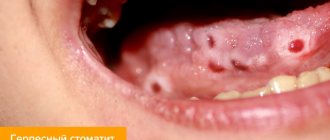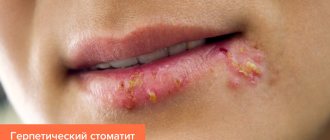An antibiotic (antibacterial drug, antimicrobial agent) is a drug that is effective in treating bacterial infections. Its effect is to directly affect the bacterium, it kills it. Its effect may also be to slow down the proliferation of bacteria, which allows the immune system to cope with it. The high prevalence of infections, a large selection of antibiotics for children, and the unjustified prescription of these drugs for diseases in children and adults have led to threatening consequences for human life—antibiotic resistance. According to the Eurasian recommendations, 25,000 deaths annually in the EU are associated with antibiotic resistance. At the moment, antimicrobial agents are an irreplaceable resource for humanity. Antibacterial resistance can be considered a threat to national security.
Before moving on to the choice of a children's antibiotic, consideration of dosage, duration of use, it is necessary to analyze and explain the main points in the formation of resistance to antibacterial agents. Only after this can one adequately judge the choice and approach to prescribing these medications.
Antibiotic resistance
Antibiotic resistance is the term for resistance to antibiotics. Who is to blame for this? The main reason is the excessive and uncontrolled use of antimicrobial agents. This applies not only to medicine.
Prescribing antibiotics should always be justified.
Causes
- Application in medicine. Unjustified prescription on an outpatient basis, in a hospital, self-medication (over-the-counter). The main emphasis is on counteracting the unjustified prescription of antibiotics in primary care (at the outpatient stage). For this purpose, clinical recommendations and algorithms for prescribing antibiotics to children are specially developed and implemented in practical healthcare. Also, through the media, explanations are provided to the population about the need for the judicious use of antimicrobial agents and the dangers of their independent use.
- Use of antibiotics in veterinary medicine.
- Application in the agricultural industry.
Basic rules for the correct use of antibacterial drugs
- An antimicrobial agent is taken only in the presence of a bacterial infection that is suspected or documented.
- When using the drug, you must adhere to the optimal regimen. The first is the correct choice of medicine. Otherwise, it is necessary to maintain an adequate dose and duration of use.
- When choosing a drug, it is necessary to take into account the regional situation regarding antibiotic resistance of the most common pathogens and take into account the likelihood of infection of the patient with these bacteria.
- Do not use low quality antibiotics with unproven effectiveness.
- Do not use antibiotics for prophylactic purposes.
- The effect of using an antibacterial agent is assessed 48-72 hours after the start of treatment.
- Explain the harm of non-compliance with the medication regimen, and also explain the dangers of self-medication.
- Promote the correct use of the drug by the patient.
- In each case, it is necessary to use methods to determine the cause of the infection.
- When prescribing an antibacterial drug, doctors must adhere to recommendations based on evidence-based medicine.
Treatment of bacterial stomatitis
Self-medication for infectious stomatitis is completely excluded, since it is necessary to accurately identify the pathogen and select drugs that suppress it. Such studies are carried out in the laboratory. This is especially important when it comes to babies. To prevent possible complications, parents of a baby should immediately consult a doctor as soon as they see an inflamed scratch or swelling in the child’s mouth.
When treating bacterial stomatitis, the following are used:
If necrosis has developed, dead tissue is removed surgically, after which it is necessary to completely sanitize the oral cavity.
In parallel with medical measures to eliminate the symptoms of bacterial stomatitis, the patient is prescribed a diet. During this period, it is necessary to ensure maximum sparing of the oral mucosa, limit the consumption of carbohydrates and enrich the diet with vitamins and proteins.
- Superficial (catarrhal). In this case, symptoms of intoxication manifest themselves in a deterioration in appetite and an increase in temperature. There is discomfort when chewing and swallowing food, and the secretion of saliva periodically increases. When examining the oral cavity, a white coating on the tongue is found (on its lateral surfaces there are clearly visible imprints of teeth), bleeding gums, and hyperemia of the mucous membrane. Lack of treatment for catarrhal bacterial stomatitis leads to the disease progressing to the next, more severe form.
- Deep (ulcerative-necrotic). The patient's condition worsens. Symptoms of intoxication intensify: a person has a headache, the temperature rises to high levels, sleep and appetite are disturbed, weakness, irritability, and lethargy appear. Also, bacterial stomatitis in this form is characterized by pain when chewing, bad breath, and increased salivation. When examining the oral cavity, bleeding gums, hyperemia of the mucous membranes, and the presence of ulcers are revealed - first small, covered with a grayish coating, then enlarged, deep, with traces of tissue decay. Immunostimulants. They are necessary to boost immunity and prevent new outbreaks of the disease. These drugs have local and general effects. The doctor selects the optimal treatment option depending on the patient’s condition. For the same purpose, it is recommended to take a course of vitamins.
- Antibiotics. They are prescribed when bacterial stomatitis has become severe or the cause of the disease is systemic diseases of the internal organs. Effective remedies that stop infection directly in the oral cavity are ointments that contain an antibiotic. They give excellent results if the causative agent is a coccal infection. Among the drugs for oral administration in the treatment of bacterial stomatitis, penicillin, lincomycin, gentamicin, kanacimin and others are used.
- Antiseptics. At the initial stage and in the middle of the disease, rinsing with a chlorhexidine solution and treating the mucous membranes of the oral cavity with an anti-inflammatory gel with an analgesic effect are recommended. After the disappearance of acute symptoms, treatment of bacterial stomatitis continues with the help of epithelializing agents that promote rapid healing of defects.
Indications for antibiotics
A fairly common mistake is the use of antibiotics for diseases that develop as a result of a non-bacterial infection.
Antibiotics should not be used for viral infections.
Among these diseases:
- Acute pharyngitis.
- Acute laryngotracheitis.
- Rhinitis.
- SARS, only.
- Acute bronchitis. It is permissible to use antibiotics when bronchial constriction develops, as well as when fever lasts more than 5 days.
In these cases, the prescription of antibiotics is not justified, since the cause that led to these diseases is often viruses.
There are also controversial points when both viruses and bacteria can lead to the development of the disease. Such diseases include:
- Acute rhinosinusitis.
- Acute otitis media.
- Acute tonsillitis.
In such cases, an antibiotic is prescribed only after examination and observation by a doctor of the patient.
For viral infections (pharyngitis, rhinitis, laryngitis, tracheitis), the effectiveness of antibiotics is equal to the placebo effect. It is important to remember that the prescription of antibacterial agents does not prevent the development of bacterial superinfection (that is, the addition of a bacterial infection to an existing viral one). There are no effective remedies against ARVI. The use of antiviral immunostimulating agents common in pharmacy chains often does not have any effect. In this case, the antiviral agent can be considered as ascorbic acid or garlic. In such cases, adequate pathogenetic and symptomatic treatment is prescribed, which allows eliminating and eliminating the symptoms of ARVI. Used: paracetamol, ibuprofen, mucolytics (ambroxol, acetylcysteine, carbocysteine), vasoconstrictor nasal drops for a runny nose, nasal corticosteroid for rhinosinusitis. If there is a disease with a viral or bacterial cause (tonsillitis, sinusitis, otitis media), then in this case antibacterial therapy delayed by 2-3 days is recommended. Delayed antibiotic prescribing for upper respiratory tract infections has reduced the frequency of antibiotic prescriptions by 40%.
These statements are of an evidentiary nature and are described in more detail in the training manual “ Rational use of antimicrobial agents in outpatient practice of doctors , written on the basis and evidence base of the 2016 Eurasian recommendations.
Treatment of chronic stomatitis
Just as in the case of acute diseases, it is necessary to eliminate the cause: correct a poor-quality prosthesis, remove dental plaque, replace a filling, etc. For viral stomatitis, antiviral drugs are prescribed, and for candidiasis stomatitis, antifungal drugs are prescribed. Since chronic stomatitis often occurs with decreased immunity, it is recommended to take immunomodulatory drugs and vitamins.
Local treatment: painkillers in the form of gels, sprays, rinses and oral baths, antiseptics.
The main types of antibiotics and their common representatives on the market
Below we consider the most popular and frequently used groups of antibacterial agents:
- Beta-lactams . Among them are penicillins, cephalosporins, and carbapenems. Among the penicillins, it is worth highlighting: amoxicillin, ampicillin, ticarcillin, carbenicillin, mezlocillin, mecillam. The most popular cephalosporins are: cefazolin, cephalexin, cefuroxime, cefotaxime, ceftriaxone, cefepime, ceftobiprole. Carbapenems are used much less frequently. Meropenem can be isolated.
- Macrolides . Macrolides include: clarithromycin, azithromycin (sumamed), josamycin.
- Tetracyclines . The most common: tetracycline, doxycycline, oxytetracycline.
- Aminoglycosides . Popular ones: gentamicin, amikacin, isepamycin.
- Levomycetins . Trade names: chloramphenicol, chloromycetin.
- Glycopeptide antibiotics . The most commonly used: vancomycin, bleomycin.
- Lincosamides . Used in medicine: lincomycin, clindamycin.
- Fluoroquinolones . Among them, the most commonly used are: ciprofloxacin, levofloxacin, gemifloxacin. They are a broad-spectrum antibiotic for children. These antibiotics are not contraindicated in pediatric practice, but their use in children is sharply limited.
It is important to remember that these drugs have their own indications and contraindications, and are also used against certain infections.
These drugs have their own indications and contraindications, and have a narrow or broad spectrum of activity against bacteria. Some of the listed drugs can be used by children under one year of age. Children's antibiotics are available in tablets, suspensions, and ampoules for intravenous and intramuscular administration. Calculation of the dose, dilution of antibiotics and administration of the required dose to the child should be carried out by medical personnel in order to avoid unwanted reactions, as well as complications during injections. They should be prescribed exclusively by a doctor.
Duration of use of antibacterial agents
Parents often ask questions: “How many days are antibiotics given to children? What is the best antibiotic for children? What should I give my child when taking antibiotics? In most cases, 5-7 days of use are sufficient. There are exceptions in which the duration of use may increase to 10–28 days. The second question cannot be answered unambiguously. Each drug has its own indications and contraindications, so the use of a particular drug depends on the situation (age, diagnosis, concomitant pathology, etc.). To the third question, many doctors will answer the same: “Probiotics.” A probiotic will restore normal intestinal microflora that has been affected by an antibacterial agent. As a rule, they are prescribed in a course of 2 weeks to 1 month.
You can always consult your doctor if you have any questions regarding treatment.
According to the Eurasian recommendations, in order to overcome antibiotic resistance, experts emphasize the need to draw the attention of patients to strict adherence to the drug use regimen. It is necessary to use optimal dosage forms of antibiotics with high bioavailability, in particular, Solutab dispersible tablets, which is consistent with the current position of WHO and UNICEF. Advantages of Solutab dispersible tablets:
- Completely absorbed in the intestines. As a result, the effect is equal to the intravenous effect.
- Create a high concentration at the site of infection.
- Better portability.
- Good organoleptic properties.
- The ability to dissolve tablets, which allows the use of this dosage form in children.
- A minimal amount of liquid is required for swallowing.
- They have an advantage over a suspension - errors in preparation are eliminated.
Dispersible tablets recommended by WHO and UNICEF:
- Flemoxin Solutab
- Flemoklav Solutab
- Suprax Solutab
- Vilprofen Solutab
- Unidox Solutab
Parents of children should remember that an incomplete course of prescribed antibiotic treatment leads to the formation of bacterial resistance and a prolonged presence of the microbe in the body.
Herpetic stomatitis
Chronic herpetic stomatitis is quite common, which manifests itself in the oral cavity in the form of small blisters that quickly resolve and ulcerative lesions can form in their place. The causes of herpetic stomatitis can be the accumulation of plaque, traumatic damage to the mucous membrane and infection in a microcrack, allergic reactions, vitamins and taking antibiotics.
Treatment of herpetic stomatitis
The main treatment options for herpetic stomatitis are taking antiviral drugs, immunostimulants, and vitamins. Local therapy through antiseptic rinses and a complex to relieve the symptomatic picture is also indicated.
The most commonly used antiviral drug is Acyclovir, the effectiveness of which is aimed at the direct destruction of viruses, while other drugs act by increasing protective reactions in the body. The course of taking Acyclovir is up to a week.
Viferon gel – has immunomodulatory and antiviral effects. This is a local remedy that is applied to the mucous membrane, previously washed with antiseptic agents. The course of treatment is determined for about a week, and the gel must be applied several times a day.
Immunostimulants in treatment are aimed at preventing relapses, also for the main purpose of treating inflammation
Imudon is prescribed to increase local immunity of the oral cavity. It comes in tablet form and is taken for at least three weeks. After treatment, a preventive course every six months is indicated.
Amiksin - the drug has an immunostimulating effect.
Vitamin complexes – in the process of treating stomatitis, it is necessary to drink vitamin complexes for three months.
Rinsing the mouth with antiseptics eliminates pathological microorganisms and increases the effectiveness of cleaning. It is necessary to use only those drugs that act against the Herpes virus; there is no point in using other drugs.
Antiseptics for chronic herpetic stomatitis include the drug Miramistin, which must be used to rinse the oral cavity several times for one minute. The drug is also available for applications - Viferon-gel.
Herpetic inflammation can be accompanied by various systemic changes:
- increase in body temperature,
- allergic reactions.
Therefore, in parallel with the main treatment, symptomatic therapy is carried out. Antipyretics and antihistamines are used.
It is important to know that herpetic inflammation is a contagious process, the virus is transmitted through household and contact contact, therefore, during treatment, the patient must use individual hygiene products.
The doctor's main prescription will be antibiotic therapy:
- drug Lincomycin,
- Amoxiclav,
- Metronidazole.
From antihistamines:
- tavegil,
- suprastin,
- Pipolfen.
Local remedies:
- Metrogil-denta or Cholisal.
In case of pain, painkillers are also indicated.
Complications of antibiotic use
When using antibiotics, there is a risk of developing unwanted reactions. Such complications include:
- Hepatotoxicity – liver damage. Most often observed when taking moxifloxacin, macrolides, and clavulanate.
- Cardiotoxicity is damage to the heart. Such a reaction can occur when using fluoroquinolones, azithromycin, clarithromycin.
- Neurotoxicity is damage to the nervous system. Occurs with fluoroquinolones.
- Allergy . Characteristic of penicillins and cephalosporins.
In fact, the wider the spectrum of antimicrobial activity, the higher the risk of adverse reactions..
Choosing an antibiotic in a child
Previously, we reviewed the main diseases of the upper and lower respiratory tract, for which antimicrobial agents can be used. Now we will analyze the main drugs that can be used for this or that pathology, and also indicate the required dosage of the drug.
Do not take antibiotics without a doctor's prescription.
Do not use medications yourself! The medications and dosages listed below are for informational purposes only and are not equivalent to treatments prescribed by a physician.
Acute otitis media
The drug of choice is amoxicillin 40-90 mg/kg/day in 3 divided doses. Duration of therapy is 10 days in children <5 years old, 5-7 days in children >5 years old. The second-line drug is amoxicillin/clavulanate. The third-line drug is josamycin.
Acute rhinosinusitis
Similar to the use of antibacterial agents for acute otitis media.
Acute tonsillitis
The drug of choice is amoxicillin 45-60 mg/kg in 3 doses, phenoxymethylpenicillin 25-50 mg/kg 3-4 times a day. The second-line drug is cefixime. The third-line drug is josamycin. Duration of therapy is 10 days.
Community-acquired pneumonia
The therapy of choice is amoxicillin IV 45-90 mg/kg/day in 3 divided doses. The second line drug is amoxicillin/clavulanate, cefuroxime IM, ceftriaxone IM. The third line drug is josamycin 40-50 mg/kg/day in 2 doses.
Antibiotics are indispensable drugs in the fight against bacterial infection. These medications should be prescribed solely for medical reasons. It is very important to adhere to the prescribed regimen of using the antibacterial agent. Do not self-medicate. If signs of infection occur, contact your pediatrician, who will help establish the diagnosis, cause of the disease, and prescribe adequate treatment.
Bacterial stomatitis: before and after photos
The causes of infection may be:
- pockets of bacteria accumulation on carious teeth;
- germs entering the mouth due to herpes;
- infection during treatment - bacterial stomatitis can develop if the doctor does not comply with antiseptic rules;
- chronic diseases of various organs;
- contact with a sick person (for example, a kiss).
Symptoms of infectious stomatitis are, first of all, redness of the oral mucosa in the place where microbes entered the wound, swelling, and in the necrotic form, a rash. In children, cracks may form in the mucous membrane, and the gums begin to bleed. The damaged area is itchy and painful.
If bacterial stomatitis is not treated, the temperature rises, a headache appears, the lymph nodes and tonsils become inflamed, and due to intoxication of the body, the rash spreads throughout the body. Children may develop a sore throat and experience pain in the knee joints.









